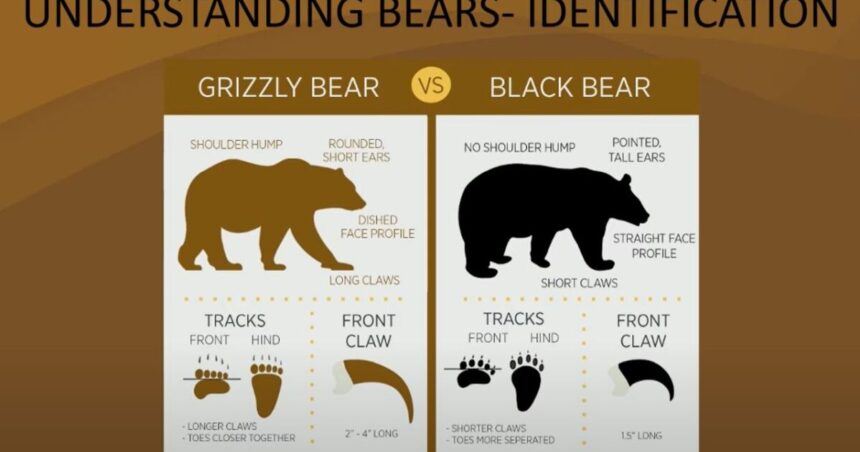GREAT FALLS — As warmer weather encourages outdoor enthusiasts to explore Montana’s trails, encounters with wildlife, particularly bears, become more likely.
Jack Austin, a Bear Conflict Technician with Montana Fish, Wildlife and Parks (FWP), recently offered insights on bear management and safety.
Educating the Public on Bear Safety
Austin hosted a public presentation focused on bear safety, highlighting key topics such as bear identification, conflict prevention, and safety protocols.
He emphasized the importance of recognizing the difference between black bears and grizzly bears, understanding bear behavior, and knowing how to stay safe in bear country.
“We give at least a dozen of these presentations every year to educate the public on how to stay safe around grizzly bears and to manage conflicts,” Austin said. He also discussed the critical issue of bears learning problematic behaviors from their mothers, which can lead to increased conflicts with humans.
Key Bear Safety Tips
Austin recommended several straightforward measures to enhance safety during outdoor activities:
- Travel in Groups: Larger groups are naturally louder and less likely to surprise a bear.
- Stay Noisy: Making noise, such as shouting “Hey, bear!” periodically, can alert bears to human presence, reducing the risk of startling them.
- Carry Bear Spray: Bear spray is an essential tool. “Most people aren’t trained to effectively use firearms in a bear encounter,” Austin noted. “Bear spray creates a cloud that a charging bear runs into, which is highly effective. Over 90% of the time, bears don’t make contact with a person who uses bear spray.”
The Importance of Bear Spray
While some might consider firearms for bear protection, Austin highlighted that bear spray is often more effective.
“Bear spray puts out a large cloud that a bear runs into, which is very effective. In over 90% of cases, the bear doesn’t make contact with the person using it,” he explained.
Expanding Bear Populations
Austin also mentioned the growing bear populations and their expanding range. “Bears are moving out from the east front of the Rockies further into the prairies. While bear density decreases further east, it’s still crucial to be prepared,” he said.
As bears reclaim more of their historic range, understanding and implementing these safety measures becomes increasingly important for anyone venturing into Montana’s wilderness.
With proper education and precautions, both humans and bears can safely share these natural spaces.





